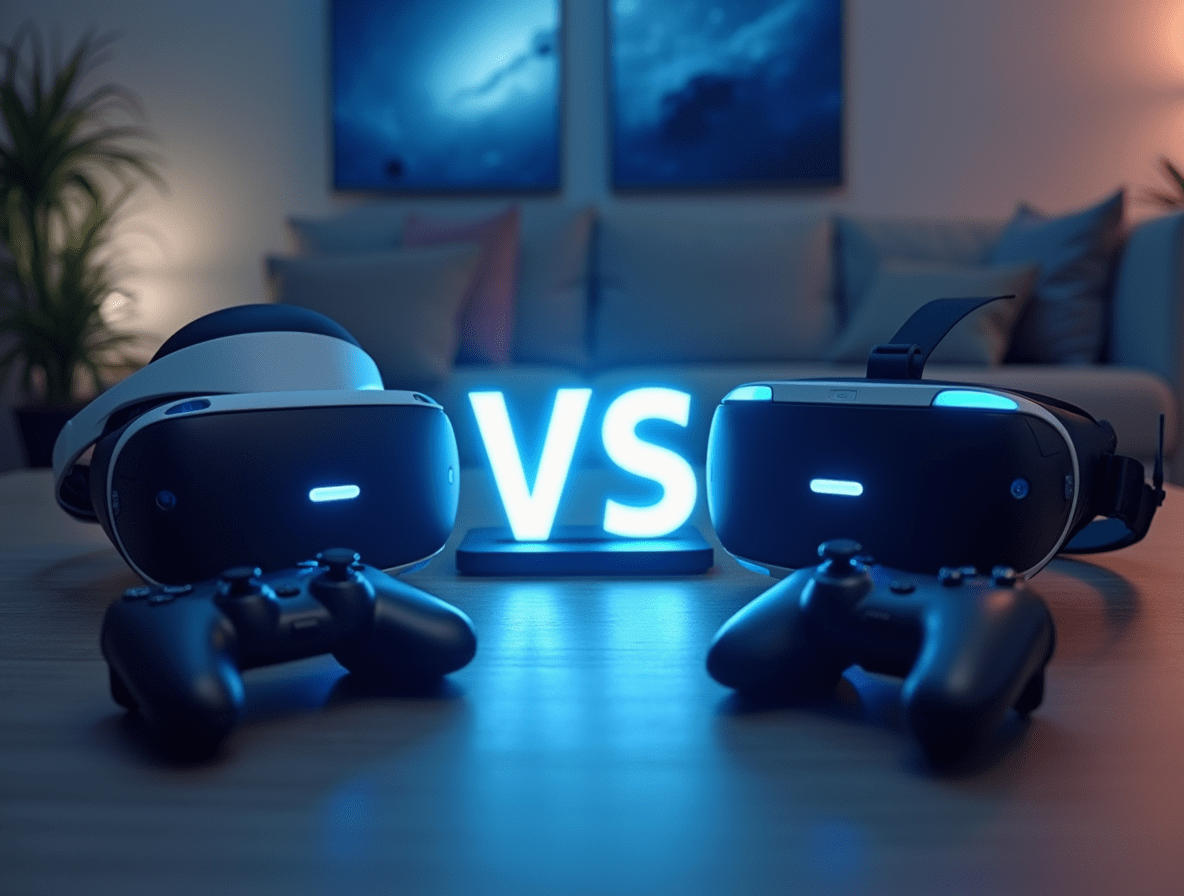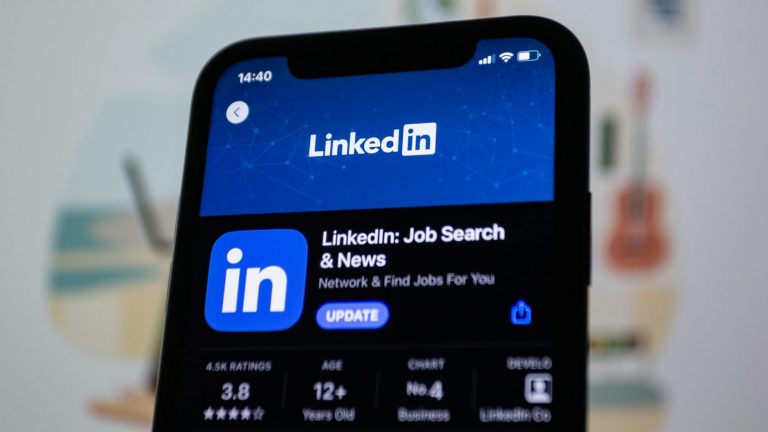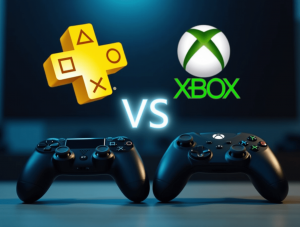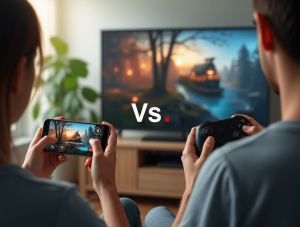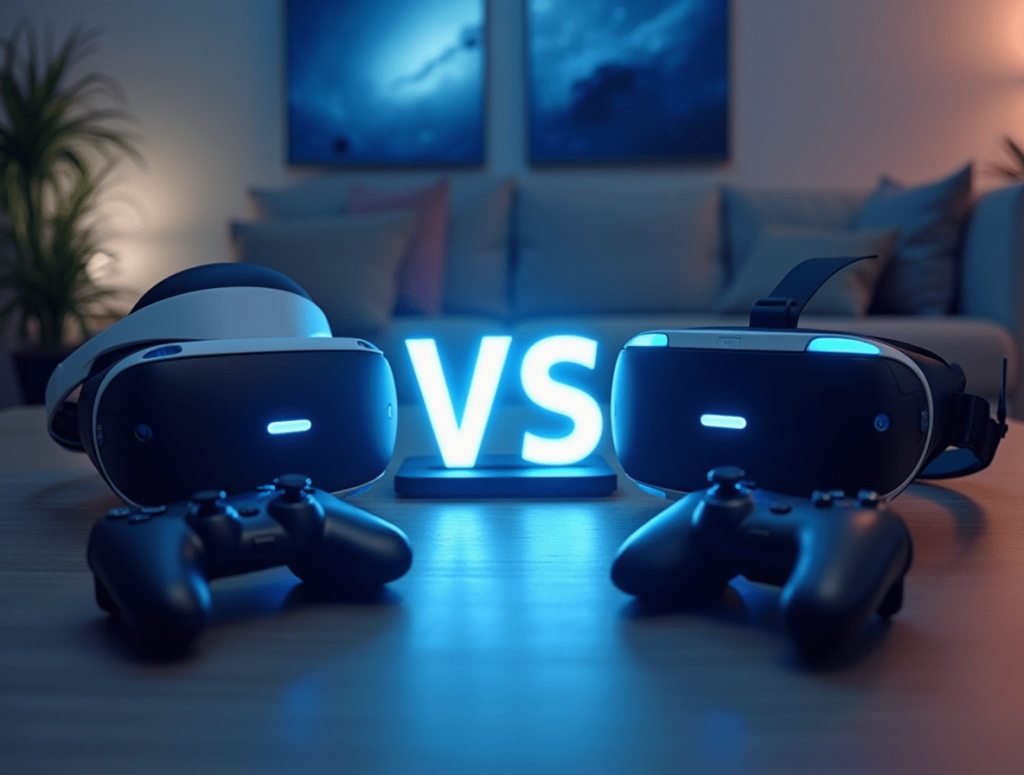
Oculus Quest 2 vs PlayStation VR2: Which VR Headset Should You Buy?
Virtual reality gaming has evolved from a niche curiosity to a mainstream entertainment option, with technologies that now deliver truly immersive experiences at increasingly affordable prices. As more people look to step into virtual worlds, two major platforms have emerged as frontrunners: Meta’s Oculus Quest (now officially called Meta Quest) and Sony’s PlayStation VR.
For newcomers to VR, choosing between these platforms can be confusing. Each offers different advantages in terms of setup, comfort, game selection, and overall experience. This comparison breaks down exactly what you need to know about both systems to make the right choice for your virtual reality adventures.
Hardware Comparison: What’s in the Box
Oculus Quest 2 Hardware
The Oculus Quest 2 (Meta Quest 2) is a standalone VR system that works without any additional equipment:
- Headset: Self-contained unit with built-in computing power
- Controllers: Two Touch controllers included
- Processor: Qualcomm Snapdragon XR2
- Resolution: 1832 × 1920 pixels per eye
- Refresh Rate: Up to 120Hz
- Storage: 128GB or 256GB options
- Weight: 503 grams (1.1 pounds)
The Quest 2’s standout feature is its completely wireless design. Everything needed for VR is contained within the headset itself – no external sensors, consoles, or computers required. This creates unmatched freedom of movement and easy setup.
PlayStation VR2 Hardware
The PlayStation VR2 operates as an accessory to the PlayStation 5 console:
- Headset: Connects to PS5 via single USB-C cable
- Controllers: Two PS VR2 Sense controllers included
- Display: OLED display
- Resolution: 2000 × 2040 pixels per eye
- Refresh Rate: 90Hz-120Hz
- Field of View: Approximately 110 degrees
- Weight: 560 grams (1.23 pounds)
Unlike the original PSVR which required a camera and multiple cables, the PSVR2 significantly simplifies the setup with its single-cable connection to the PS5. However, it still remains tethered, limiting free movement compared to the Quest 2.
Setup and Ease of Use: From Box to Virtual Reality
Getting Started with Quest 2
Setting up the Quest 2 takes just minutes:
- Download the Meta Quest app on your smartphone
- Turn on the headset and pair it with your phone
- Follow the in-headset tutorial to establish your play area
- Start downloading games directly from the built-in store
The Quest 2 uses inside-out tracking with four cameras on the headset to map your environment and track your movements without external sensors. This system lets you quickly establish a “Guardian” boundary in any room with sufficient space.
Getting Started with PlayStation VR2
Setting up PSVR2 is straightforward but requires a PS5:
- Connect the headset to a free USB-C port on your PS5
- Follow on-screen setup instructions
- Calibrate controllers and establish play area
- Download games from PlayStation Store
The PSVR2 uses inside-out tracking similar to Quest 2, eliminating the external camera requirement from the original PSVR. The headset maps your room using four built-in cameras, though you remain tethered to the PS5 console by cable.
Visual Quality and Performance: How Good Does It Look?
Quest 2 Graphics and Performance
The Quest 2 offers impressive visuals for a standalone device:
- Resolution: Sharp 1832 × 1920 per eye display reduces the “screen door effect”
- Performance: Snapdragon XR2 processor handles most VR games well
- Wireless PC Option: Can connect to VR-ready PCs via Air Link for enhanced graphics
- Refresh Rate: 120Hz support reduces motion sickness for many users
While impressive for a standalone device, the Quest 2’s mobile processor can’t match the graphical power of a PS5. However, connecting it to a gaming PC (wirelessly or via Link cable) significantly enhances its visual capabilities.
PlayStation VR2 Graphics and Performance
PSVR2 leverages the PS5’s considerable processing power:
- Resolution: Higher 2000 × 2040 per eye resolution provides exceptional clarity
- Display Technology: OLED panel delivers deeper blacks and vibrant colors
- Performance: PS5’s dedicated hardware handles complex VR environments smoothly
- Enhanced Features: Eye tracking and headset feedback add immersion
With the PS5’s dedicated GPU and CPU, the PSVR2 delivers console-quality graphics in VR. The addition of eye tracking technology allows for foveated rendering, which concentrates graphical resources where you’re looking for better performance.
Game Libraries: What Can You Actually Play?
Oculus Quest 2 Game Selection
The Quest 2 offers a diverse and growing library:
- Exclusive Titles: Beat Saber, Population: One, Resident Evil 4 VR
- Cross-Platform Games: Superhot VR, Job Simulator, The Walking Dead: Saints & Sinners
- App Store: Built-in Meta Quest Store with 250+ dedicated titles
- PC VR Access: Compatible with Steam VR and Oculus Rift libraries when connected to PC
Many Quest 2 games are optimized for mobile hardware, resulting in stylized rather than photorealistic graphics. However, the library spans many genres from fitness apps to shooters and puzzle games.
PlayStation VR2 Game Selection
The PSVR2 focuses on high-quality gaming experiences:
- Exclusive Titles: Horizon Call of the Mountain, Gran Turismo 7 VR, Resident Evil Village
- PlayStation Franchises: Established Sony franchises with VR adaptations
- Third-Party Support: Major publishers creating PSVR2-enhanced versions of popular games
- Backward Compatibility: No native support for original PSVR games (though some offer free upgrades)
Sony’s relationships with major game developers result in higher production values and more AAA content. However, the overall library remains smaller than Quest 2’s, especially for indie and experimental titles.
Comfort and Accessibility: Can You Wear It for Hours?
Quest 2 Comfort Features
The Quest 2’s design prioritizes versatility and simplicity:
- Weight Distribution: Front-heavy design (503g) can cause discomfort during longer sessions
- Adjustability: Standard strap is basic; Elite Strap accessory significantly improves comfort
- Glasses Compatibility: Includes spacer for glasses wearers
- IPD Adjustment: Three physical settings for interpupillary distance
- Wireless Freedom: No cables to restrict movement or cause tripping hazards
Many users purchase aftermarket head straps to improve comfort, as the base strap distributes weight less evenly than premium options.
PlayStation VR2 Comfort Features
The PSVR2 builds on Sony’s experience with the original headset:
- Weight Balance: Better weight distribution with adjustable headband design
- Cushioning: Soft face cushion with vent design to reduce fogging
- Cable Management: Single cable is lighter than original PSVR but still limits movement
- IPD Adjustment: Digital adjustment for fine-tuning lens spacing
- Extended Use: Designed for longer gaming sessions with balanced weight
Many users find the PSVR2’s halo-style headband more comfortable for extended play sessions compared to the Quest 2’s default strap system.
Price and Value: What’s the Total Investment?
Oculus Quest 2 Cost Breakdown
The Quest 2 offers a complete package at a competitive price:
- Headset: $299 (128GB) or $399 (256GB)
- Additional Requirements: None (standalone device)
- Optional Accessories: Elite Strap ($49), Carrying Case ($49), Link Cable for PC connection ($79)
- Game Prices: $10-40 per title, with frequent sales
The total entry cost for Quest 2 VR is just the headset price, making it the most affordable quality VR system available. However, limited storage means you’ll need to manage which games are installed.
PlayStation VR2 Cost Breakdown
The PSVR2 represents a larger investment:
- Headset: $549 (includes controllers)
- Required Hardware: PlayStation 5 console ($499-$399)
- Additional Costs: None required
- Game Prices: $20-70 per title, with PlayStation Store sales
The total minimum investment for PSVR2 is approximately $949 ($549 + $400 for PS5 Digital Edition), assuming you don’t already own a PS5. This represents a significant price premium over the Quest 2.
Mobility and Space Requirements
Quest 2 Space Flexibility
The Quest 2’s wireless design allows for flexible play spaces:
- Minimum Space: As little as 6.5 × 6.5 feet for room-scale VR
- Guardian System: Custom boundary creation adapts to your available space
- Portability: Easy to transport and set up in different locations
- Stationary Mode: Option for seated or standing play in limited spaces
This flexibility makes the Quest 2 ideal for homes with limited dedicated gaming space or for taking VR to different locations.
PlayStation VR2 Space Considerations
The PSVR2’s tethered design imposes some limitations:
- Cable Length: Approximately 4.5m cable restricts movement radius
- Console Proximity: Must play within cable distance of PS5
- Room Mapping: Built-in room scanning similar to Quest 2
- Seated Play: Excellent options for seated VR experiences
The cable connection means you’ll typically set up your PSVR2 in a fixed location near your console, limiting spontaneous play in different rooms.
Who Should Buy Each Headset?
Oculus Quest 2 is Better For:
- VR newcomers seeking the most affordable entry point
- Users who value wireless freedom and portability
- People without a gaming PC or PlayStation 5
- Those who want to use VR for fitness, social, or productivity apps beyond gaming
- Enthusiasts interested in experimental or indie VR content
PlayStation VR2 is Better For:
- Existing PlayStation 5 owners
- Gamers who prioritize high-end graphical experiences
- Fans of Sony’s exclusive game franchises
- Players who primarily use VR for seated experiences
- Those willing to pay premium prices for premium experiences
Conclusion: Making the Right Choice
Both the Oculus Quest 2 and PlayStation VR2 represent excellent VR platforms with distinct advantages. Your best choice depends largely on:
- Your existing gaming setup: PS5 owners have a natural path to PSVR2
- Your budget: Quest 2 offers the lowest total cost of entry
- Your space constraints: Limited space favors the wireless Quest 2
- Your game preferences: Sony exclusives vs. Meta’s broader library
For most first-time VR users, the Quest 2’s combination of affordability, ease of use, and wireless freedom makes it the recommended starting point. Its standalone nature means you can experience quality VR without additional hardware investments.
The PSVR2, while more expensive as a total package, delivers a premium experience that will appeal to dedicated gamers who already own a PS5 and want the highest visual fidelity in their virtual reality experiences.
FAQ Section
Can the Oculus Quest 2 connect to PlayStation 5?
No, the Quest 2 cannot connect to or play PlayStation VR games. It’s a separate platform entirely from PlayStation’s ecosystem.
Do I need a lot of space for VR gaming?
While more space enhances the experience, both headsets can be used in limited areas. The Quest 2’s wireless design makes it more flexible for smaller spaces, while many PSVR2 games can be played seated.
Which headset causes less motion sickness?
Both headsets have high refresh rates (up to 120Hz) that help reduce motion sickness. The PSVR2’s slightly higher resolution and OLED display may provide an edge for sensitive users, but game design impacts this more than hardware differences.
Can I watch movies and YouTube on these headsets?
The Quest 2 offers dedicated apps for YouTube, Netflix, and other streaming services. The PSVR2 focuses primarily on gaming with more limited media functionality through the PS5.
Do I need to buy games again if I already own them on other platforms?
Yes, in most cases. VR versions of games are typically sold separately from their non-VR counterparts, though some PS5 games offer free PSVR2 upgrades or modes.





